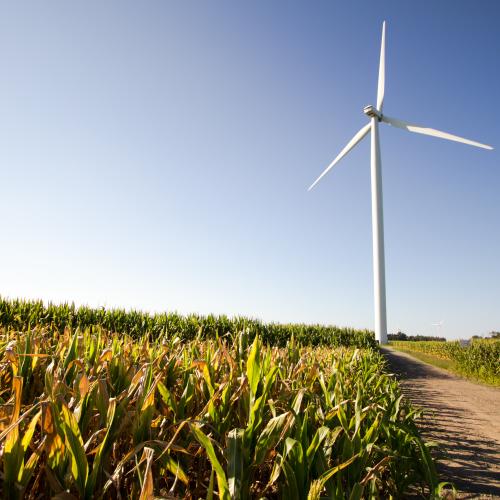With a vast agricultural industry and resources spread over fields and acres, how do you measure the true renewable energy resources of Minnesota? The Agricultural Utilization Research Institute (AURI), the Redwood Area Development Corporation (RADC), and the Region Nine Development Commission (RNDC) in South Central Minnesota have been working on populating a template to capture the renewable energy potential of their communities.
The Agricultural Utilization Research Institute is a non-profit organization created and funded by the Minnesota legislature in 2001 “to foster long-term economic benefit through increased business and employment opportunities to rural Minnesota.” To achieve their mission, AURI conducts research and develops tools for the improvement of Minnesota agricultural commodities and products.
CERTs and several other economic development entities all identified early on that it would be great to have a toolkit in place that local governments could use on their own, rather than requiring counties to contract individually for these services. In 2009, AURI worked with 6Solutions LLC to create a renewable energy template, which is a document that gives instructions and data for estimating the renewable energy potential and energy demand for a county or region. According to the AURI website, “the primary intent of the template is to provide a ‘how to’ manual for inventorying biomass resources and determining local and/or regional markets for renewable energy.”
The template’s purpose is to gather all the necessary data for a county or region in one place to identify what energy resources are potentially available in the region so they can be utilized for projects. The template has already been put to use by the Redwood Area Development Corporation, which specializes in helping community projects and businesses secure grants, collect data, and help business and community projects move forward.
The template includes sections on infrastructure; feedstock; supply; resources available in the area, land base; wind, solar, and geothermal energy; animal waste, biomass; agricultural residue; and woody biomass. Gathering data on the resources that can be used for renewable energy projects in the area will greatly benefit businesses and other projects because it would allow organizations like RADC to see if a project would be feasible for a particular region.
Another organization that serves this region in Minnesota is the Region Nine Development Commission, which is comprised of active citizens, elected officials, government agencies, educational institutions, business owners, and non-profit agencies. Their mission is to explore and support renewable energy uses in the nine-county area. RNDC covers the Blue Earth, Brown, Fairbault, Le Seur, Martin, Nicollet, Sibley, Waseca, and Watonwan counties.
With the help of a SE CERT grant, the RNDC was able to complete renewable energy inventories of all of their nine counties. The report of this data is available on their website (http://www.rndc.org/renewable-energy/).
The RNDC will use the data in the template to help local elected officials and entrepreneurs to understand the types of resources available and that can be accessed when planning economic and community projects.
“Renewable energy professionals, small business owners, nonprofits, community people, local units of government and elected officials have been receiving ongoing updates via the Renewable Energy Task Force,” reported Ronda Allis for RNDC. “The benefits to date have included new businesses developing (two currently in progress) in this region due to knowing what energy resources are available.”
Compiling the data into the Template increased the accessibility of data, allowed the region to customize the Template to suit their needs, and reduced the barriers that businesses, community projects, and other organizations had previously encountered when trying to implement a project.
Both the Region Nine Development Commission and Redwood Area Development Corporation were able to leverage other funds through obtaining a CERTs grant from their teams, the SE CERT and SW CERT in 2009. CERTs lent credibility to the projects and also helped the organizations find data and publicized the projects to garner more interest from the community.
“The report is effectively a benchmark from which we can make future comparisons,” said Ronda Allis. “The data can be used to establish a renewable energy emphasis in our local manufacturing sector and to support start-up energy firms.”
Interested communities can access the AURI template. According to Ronda, the tool helped RNDC and partners realize that “we can provide more than enough energy right here in South Central Minnesota, while at the same time strengthening our local economy by keeping our energy dollars and jobs local, and protecting the environment by switching to truly clean energy sources.”
Project One Snapshot – AURI Template
- Project: Renewable Inventories Template to organize data on local renewable energy resources
- Work completed by: Redwood Area Development Corporation
- Grant: $5,000 SW CERT
Project Two Snapshot – Renewable Energy Inventories
- Project: Use the AURI Template and populate templates for the counties of Blue Earth, Brown, Faribault, Le Sueur, Martin, Nicollet, Sibley Waseca and Watonwan
- Work completed by: Region Nine Development Commission
- Grant: $3,000 SW CERT


